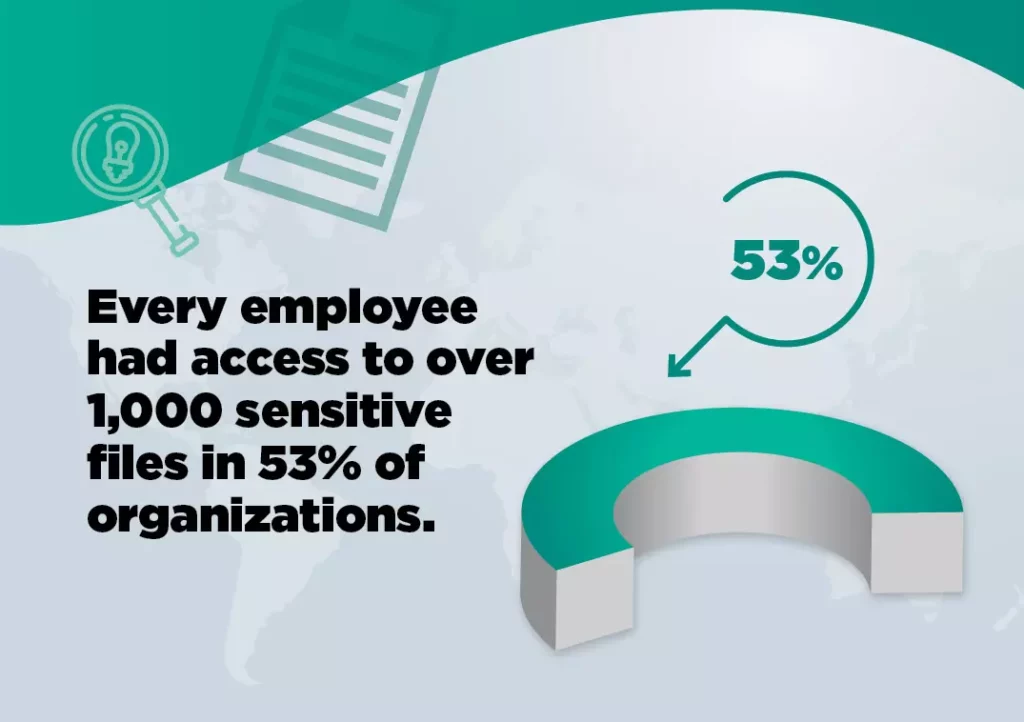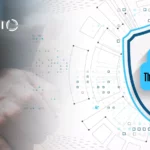Insider risk management refers to the process of identifying, assessing, and mitigating potential risks posed by individuals within an organization who have insider knowledge or access to sensitive information. These individuals could be employees, contractors, or business partners. Insider risks can arise from unintentional actions, negligence, or malicious intent. They can result in data breaches, intellectual property theft, financial loss, or damage to an organization’s reputation. For 90-95% of IT leaders the biggest cause of concern is humans and for 52% of businesses employees are their biggest weakness.
According to a 2017 Kaspersky report, around 5% of all cybersecurity attacks were carried out by internal staff with malicious intent. With an additional 23% carried out by careless or uninformed employees. These are common Insider Risk Management indicators that demonstrate the need for a strong cybersecurity strategy. Although the majority of attacks come from outsiders, this insider risk still constitutes a significant proportion, posing serious cybersecurity threats to organizations.
Insider Risk Management
An organization might have the best software to secure their data center. The best physical security in and around the building. Strong defensive technologies, and the right security policies and processes in place. But should an employee act carelessly or maliciously, all these security measures are essentially useless. This is where insider risk management comes into play. Organizations are aware of the threat and have expressed concerns about it. This concern is not always linked to malicious attacks but rather to inadvertent ones.
Careless or uninformed staff can act in numerous ways that will lead to sensitive data and information becoming exposed. However, organizations also need to be aware of insiders who purposefully reveal confidential and sensitive information for personal gain. Effective insider risk management strategies can help identify, mitigate, and prevent these types of risks. Ensuring that security efforts address both external and internal threats comprehensively.

Malicious Actors
A dilemma organizations face is how to detect insiders who act with malicious intent. The aforementioned 5% of security breaches that were carried out by bad actors with insider access signifies a serious threat to organizations. This is where insider risk management becomes crucial.
These individuals will purposefully act out against the organization and might employ rogue devices to carry out the attacks. Since these attacks occur on the Physical Layer, they are undetectable to software security solutions. Devices that appear genuine to the human eye, and to security software solutions, can exfiltrate information and/or inject malware onto the endpoint that can possibly spread throughout the network it is connected to.
Alternatively, insiders might be targeted by bad actors and socially engineered to knowingly carry out attacks. Although these insiders are acting against their will, there is malicious intent behind the attack.
Insider Risk Management and Comprehensive Visibility Solutions
Visibility into network activity, servers, cloud access, and the use of applications and websites will provide organizations with insight into the actions of employees, indicating suspicious activity. This visibility must be comprehensive and span throughout the enterprise, both continuous and in real time.
Security teams must know who accessed which files and when, to detect and respond to threats. Tools should also offer visibility beyond the organization’s physical premises, as remote work and BYOD policies increase the attack surface. Insider risk management depends on robust visibility and monitoring solutions that span all endpoints and environments.
With intelligence, security teams can make decisions based on actionable insights. Human behavior can be predicted with the help of analytics. This allows for the possible prediction of insider threats by detecting suspicious behavior which can then be further investigated. Insider risk management benefits greatly from advanced analytics and predictive modeling. Enabling organizations to proactively identify potential threats and take appropriate measures to prevent security breaches and data loss.
Response and Remediation
Security teams need to be instantly alerted about suspicious behavior to contain damage early. Automated Insider Risk Management alerts combined with real-time remediation can isolate compromised user devices and prevent malware spread.
Importantly, employees who access restricted websites put the organization at risk. These websites should be blocked by security teams to prevent staff from accessing them to avoid the unintentional installment of malware on devices.
Hardware Asset Visibility for Cybersecurity
Many times, enterprises’ IT and security teams struggle in providing complete and accurate visibility into their hardware assets. Especially in today’s extremely challenging IT/OT/IoT environment. This is due to the fact that often, there is a lack of visibility. Which leads to a weakened policy enforcement of hardware access. This may result in security accidents, such as ransomware attacks, data leakage, etc.
In order to address this challenge, ultimate visibility into your Hardware assets is required. Regardless of their characteristics and the interface used for connection as attackers. Moreover, it is important to be practical and adjust to the dynamic Cyber security defenses put in place to block them. As well as take advantage of the “blind” spots. Mainly through USB Human Interface Device (HID) emulating devices or Physical layer network implants. In addition to the deep visibility layer, a comprehensive policy enforcement mechanism recommends on best practice policy for insider risk management and allows the administrator to define a strict, or more granular, set of rules for the system to enforce.
Insider Risk Management with Sepio’s Proven Expertise
Sepio is the leader in the Rogue Device Mitigation (RDM) market and is disrupting the cybersecurity industry by uncovering hidden hardware attacks operating over network and USB interfaces. Sepio Asset Risk Management, identifies, detects and handles all peripherals. No device goes unmanaged.
The only company in the world to undertake Physical Layer Visibility fingerprinting, Sepio calculates a digital fingerprint using the device descriptors of all connected peripherals and compares them against a known set of malicious devices, automatically blocking any attacks. With Machine Learning, the software analyses device behavior to identify abnormalities, such as a mouse acting as a keyboard.
See every known and shadow asset. Prioritize and mitigate risks.
Talk to an expert. It will help you understand how to use Sepio’s patented technology to gain control of your asset risks.






